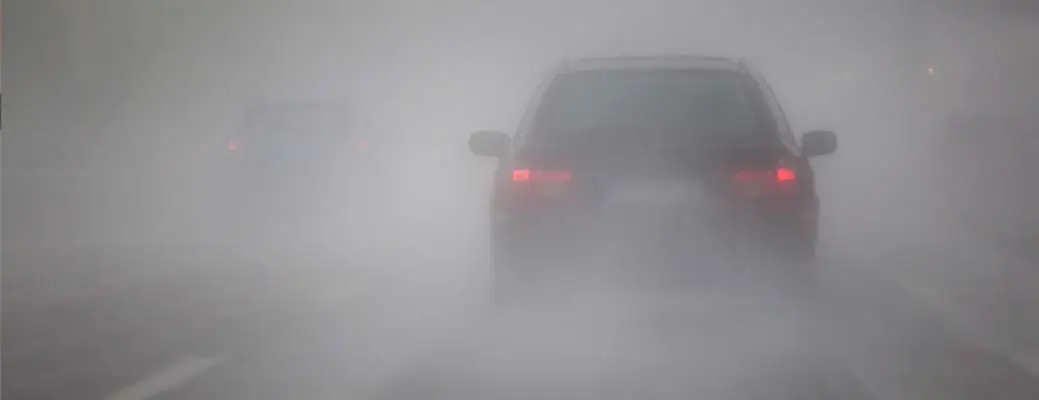Watch out and proceed with caution! Weather conditions — like heavy rain or thick fog — that reduce your visibility on the road can quickly become dangerous. The time of day you drive can also come with visibility challenges. At dawn, the sun may be in your eyes and, at dusk, it may be harder to see with the sun going down. Use these tips to help drive safely in low-visibility conditions.
Driving in Dense Fog
A dense sheet of fog can greatly diminish visibility. It probably feels like you’re driving into a white wall. When driving in low-visibility conditions caused by fog, consider:
- Using your fog lights. Unlike driving at night, your high beam headlights won’t help you see better. Your low beam or fog lights may work better and reduce the reflection coming back.
- Driving slowly. With fog conditions, it’s a good idea to reduce your speed to give yourself more time to stop.
- Braking slowly. Because it may be hard for cars behind you to see you, it’s important to brake slowly to give drivers behind you more time to slow down.
- Being on the lookout for drivers without their lights on. Cars that drive without lights on are even more difficult to see. Be cautious and watch out for cars that may not have their lights on.
- Listening for other vehicles. With limited visibility, roll down your window and listen for other vehicles before turning or changing lanes.
- Driving in bright sun. Driving into the sun can make it more difficult to see. Adjust your sun visor in a position where it blocks the sun from your eyes. You may also want to keep a pair of sunglasses in your car to help you avoid squinting.
Driving in Rain, Ice and Snow
Weather conditions can disrupt your commute or your road trip. Be sure to keep your car in tip-top condition, especially when driving in winter weather. Start with making sure your windshield wipers are working correctly and the blades don’t need replacing.
- Heavy rain: If you get caught driving in torrential rain, your windshield wipers may not be able to keep up. In this case, you may want to find a safe place to pull over to wait the rain out.
- Ice: Be sure to clear your windshield of all ice. Ice can quickly create a thick film on your windshield restricting you from seeing. Before you hit the road, clear your windshield of all ice, turn on your car’s defrost and allow your car to warm up.
- Snow: Heavy snow can also cause low visibility. If you’re driving at night during a snowfall you may notice you can see better if you drive with low beams on. The reflection off the snow can make it hard to see with high beams. Use your windshield wipers to help keep your line of sight from being restricted.
For All Conditions
It’s important to take precautions when driving in low-visibility conditions. In all conditions, be sure to avoid distractions when you’re behind the wheel. Turn the radio down and put your phone away. But before you hit the road in any condition, be sure to check with your local Farm Bureau agent to ensure your vehicle has the right coverage.

